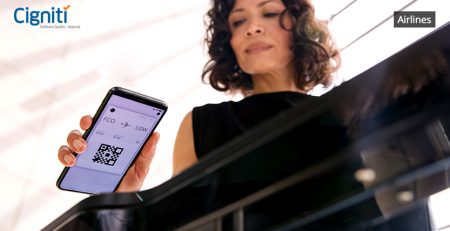Different Aspects and Success Factors of ISO 20022 Migration
What is ISO 20022?
ISO 20022 is an international standard for exchanging electronic messages between banks and financial institutions. It gives the finance industry a common language and model for sending payment messages and exchanging payment data across the globe.
ISO 20022 is an open global standard for financial information. It provides consistent, rich, structured data that can be used for every financial business transaction.
What is the new change going to be?
The rollover from the legacy MT messaging standard to the data-rich ISO MX standard is a positive step forward for all payment chain participants. So how can banks deal with this change?
Migration to ISO 20022 is moving at a rapid pace. What started in the Automated Clearing House (ACH) world with the Single European Payments Area (SEPA) is increasingly becoming the standard for instant and high-value payments. Today, many clearing system users and operators recognize the benefit of moving away from old formats to a global standard that facilitates rich data and increases accuracy and speed.
The migration to ISO 20022 will affect most banking processes, from KYC checks and electronic banking to liquidity management. Given the impact of the financial standard, every bank’s success will depend on its strategy and commitment to change. Although banks need to invest considerable time and resources into the migration process, the transition enables a new level of efficiency and cost-effectiveness.
Considering the wide variety of approaches in different regions, banks will need to closely monitor and adapt to any changes to the ISO 20022 adoption timelines. Another option is to convert existing MT messages to ISO 20022 instructions and vice versa without structural changes to core systems. However, this solution’s fast and easy nature diminishes the long-term technical efficiency gains.
The more banks adopt the new change, the more other market players will direct their payments through the banks implementing ISO 20022. Banks that choose not to migrate to ISO 20022 will not be able to offer the same level of services as the competition and will become incompatible with most other businesses. Hence, it may not reach customers all over the globe and be left behind in the industry.
The Effect of ISO 20022 on Payments
Once the legacy systems have migrated to ISO 20022, most financial institutions will be using the new messaging format. It will change the way payments are recorded and transacted more accurately and efficiently.
The SWIFT community resolved to adopt ISO 20022 for cross-border payments and cash reporting to enable banks to maximize their investment and further reap the benefits of better data. The adoption will take place over a three-year coexistence period starting at the end of 2022. SWIFT is taking measures to help facilitate a harmonized experience as different payment stages can happen across domestic systems and correspondent banking.
The gains will quickly be realized through the ability to include additional party and remittance information to help reconcile transactions. For example, the ISO 20022 messaging format can be used within invoices to identify beneficiaries and facilitate automation in their back office. The full details of the creditor reference derived from the messaging format can now be maintained throughout the payment chain without fear.
The institutions will be able to limit the resources they have to dedicate to exception handling and one-off investigations due to missing information or unstructured input that cannot be easily integrated into automated workflows. Once ISO 20022 is implemented, such exceptions can be easily avoided at the time of origination by leveraging the new standard’s additional data elements for inputs.
Adequately structured and adhered to data will support better regulatory compliance practices and financial crime monitoring. The ISO 20022 payment standards allow for end-to-end transparency and contain elements designated explicitly for items such as purpose codes, regulatory reporting, and tax identification. Additionally, ISO 20022 will enable a more comprehensive and actionable view of an institution’s transactions based on these detailed data elements and complement existing analytics tools such as tracking payments.
Integration challenges for ISO 20022 migration
The major challenge here is that financial institutions need to move towards a new structure of their current data sets and databases to align with new standards. The re-arranging of the customers’ information may be from various other sources and requires all those systems to integrate within to form the correct sequence of data transformation.
Financial institutions should establish a consistent data model for all financial transactions based on ISO 20022, whether instantiated as ISO 20022 XML messages, JSON formats over API or new data formats in the future.
The beauty of ISO 20022 is that it will facilitate the industry in creating new ways of addressing concerns as they occur in mutually agreed global standards. The standard thereby promises to end the challenges of aligning different, unique information formats across the globe.
ISO 20022 Migration
The coexistence of old and new messages is facilitated by translation services, which enable users to translate messages between ISO 20022 and their MT equivalents. There are benefits to the industry in coordinating a domestic ISO 20022 migration with this related cross-border work within the scope of domestic migration. Coordination may simplify the overall migration to ISO 20022, reducing the time when support for old and new formats is required, and synergies in back-office system upgrades may be explored. Moreover, aligning cross-border message formats with domestic message formats means that richer data can be transported end-to-end with international payments.
Factors for success in the ISO 20022 migration
The implementation and the global adoption of ISO 20022 across the cross-border payments ecosystem are pivotal to creating a better message and data model for payments within an extensive payment chain where requirements to use data without any loss on an end-to-end basis are gaining extensive regulatory attention. Successful adoption creates significant efficiencies in payments, leading to greater speed, automation, and digitization in both the payments and post-payments processes. Below are the key areas that require more attention to succeed in the ISO 20022 migration.
- We need to have a clear perspective on migration timelines
- Data formats and mapping of the legacy model to a new MX format.
- Phase-wise transition with parallel processing of old and new versions to check the compatibility of the new migration model.
- The correct formatting and usage of message standards are essential to enable smooth processing across both protocols during the coexistence period between ISO 20022 & MT.
Cigniti’s Partnered Solutions for ISO 20022 Migration
Cigniti has a team of experts with extensive knowledge of both MT and MX message formats and the right technical solution to meet the ISO 20022 migration.
We at Cigniti build a constructive and consultative approach to ISO20022 migration with our experience in understanding the past and future of banking infrastructure, and we offer services which hand hold customers right from pre-migration assessment, actual migration, and post-migration monitoring.
Our strong partnership ecosystem coupled with in-house data management helps us serve our clients at our best. Cigniti has partnerships with transformational service providers such as Trace Financial, which is the market leader in financial message transformation and integration. Cigniti has built internal expertise on Transformer, the flagship tool of Trace Financial for message conversion.
Conclusion
Cigniti is a crucial player that holds the critical success factors needed for ISO20022 migration assurance and offers an end-to-end solution that helps organizations transform their applications to be ISO20022 compliant. Cigniti has a substantial body of technical and business differentiators that help it play a pivotal role in the ISO20022 migration.
Need help? Consult our right team of experts to help with the migration, along with the precise technical solutions to meet all your ISO 20022 needs.





Leave a Reply